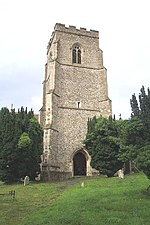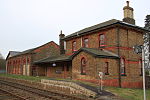Burgh Windmill
Grade II listed buildings in SuffolkGrade II listed windmillsGrinding mills in the United KingdomSuffolk CoastalTower mills in the United Kingdom ... and 2 more
Windmills completed in 1842Windmills in Suffolk

Burgh Mill is a Grade II listed tower mill at Burgh, Suffolk, England which has been converted to residential accommodation.
Excerpt from the Wikipedia article Burgh Windmill (License: CC BY-SA 3.0, Authors, Images).Burgh Windmill
Mill Hill, East Suffolk
Geographical coordinates (GPS) Address Nearby Places Show on map
Geographical coordinates (GPS)
| Latitude | Longitude |
|---|---|
| N 52.115833333333 ° | E 1.2580555555556 ° |
Address
Mill Hill
Mill Hill
IP13 6PX East Suffolk
England, United Kingdom
Open on Google Maps










